
Reprinted courtesy of Thunderbolts.info
When high voltage electrical circuitry is sufficiently overloaded, or damaged, the current will seek alternative conductive paths to discharge to ground. It causes a dangerous event called an arc flash. Arc flash occurs when the current discharges in an arc through the atmosphere.
The result is explosive. Arc heat far exceeds the surface temperature of the Sun, in excess of 35,000 °F (19,400 °C). It’s hot enough to vaporize copper conductors, producing an expanding plasma with supersonic shock-wave pressures over 1000 psi. It releases radiation across the spectrum with such energy, it will vaporize, melt and ablate materials far from the arc itself. No contact is required with an arc burn. Damage occurs from the searing hot blast.
 An arcing fault discharges to ground along the path of least resistance the same way a lightning bolt does. It is conducted through plasma formed by ionized air. Like a lightning bolt, it can be a single spark, or it can fork into a sheet of filaments that jump across gaps and craze across surfaces. The reason arcs tend to craze a surface has to do with a thing called surface conductivity.
An arcing fault discharges to ground along the path of least resistance the same way a lightning bolt does. It is conducted through plasma formed by ionized air. Like a lightning bolt, it can be a single spark, or it can fork into a sheet of filaments that jump across gaps and craze across surfaces. The reason arcs tend to craze a surface has to do with a thing called surface conductivity.
Surface conductivity is a highly conductive path, where, in a charged environment, solids collect a layer of counter ions around them. The ions build-up near current flows and highly conductive materials, such as minerals and water, due to a phenomena called the Corona Effect. The layer of ionic concentration that results, surrounds the solid surface in a plasma double layer, providing a pathway for arcing currents.
Arcing, surface conductive currents can be shown to be a significant influence in Earth’s geology. But one must imagine an arc of truly colossal size…
Earth bears the scars of many surface conductive fault events. This article presents evidence that astroblemes caused by surface conductive faults are found around the world and are easily identified once it is understood how they form.
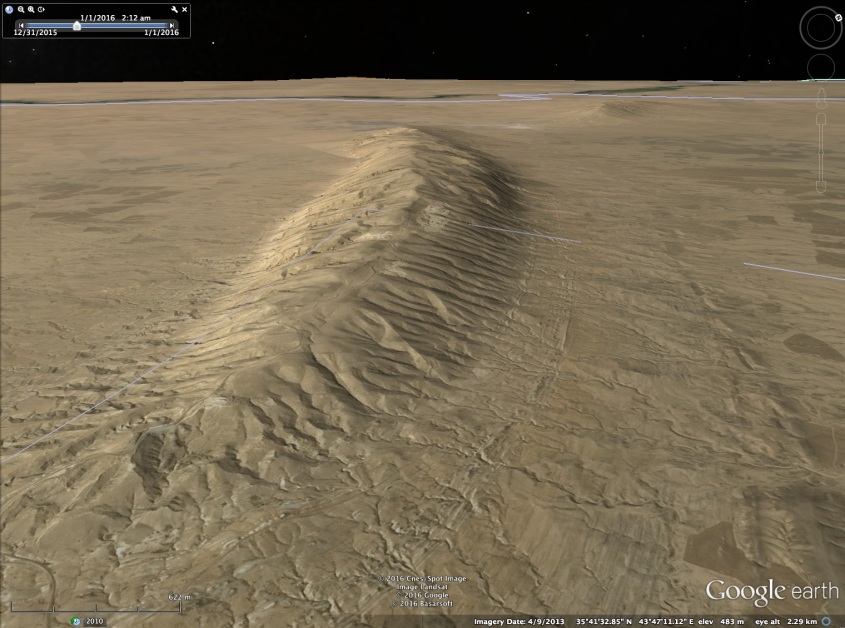
Astrobleme is a term for an ancient crater. Typically, craters are recognized as round depressions with raised rims and central peaks, commonly thought to be caused by meteorite impacts. Another type of astrobleme can be created by an air-burst meteor, when no rocky meteorite material actually impacts the ground. Instead, the meteor explodes in the upper atmosphere and its solid matter atomizes to form a bolide of plasma.
The plasma fireball carries the same speed, trajectory and energy as the original meteor, and essentially blow-torches the earth, creating the astrobleme. The “crater” in this case is typically a teardrop, or butterfly blast zone of ablated material with a hogback hill down the center. The long hogback is analogous to the central peak in a round crater, and is thought to be formed by blast melt sucked inward by supersonic winds in a central updraft, like those in the ‘stem’ of a thermonuclear mushroom cloud. This central hill, or blister, defines the path of the plasma bolide as it streaks down at an oblique angle.
Meteor researchers, Dr. Mark Boslough, and team at Sandia National Laboratory, have simulated the effects of an air-burst meteor. Dr. Boslough is a noted expert on air-burst meteors, having researched events such as Chelyabinsk and Tunguska. At 21 seconds into this video, their simulation records the fireball’s downward blast of hot plasma, pushing a shock wave with heat and pressure that melts and ablates the ground below.
When the shock-wave rebounds violently upward, rising winds shear a column of updraft opposite to the downward blast. This supersonic updraft, Dr. Boslough theorizes, vacuums molten ejecta into the strike zone, leaving a characteristic air-burst astrobleme – a linear hill with a sharply peaked ridge and distinctive triangular buttresses on the flanks, surrounded by an outwardly blasted zone of molten ejecta.
 The astrobleme characteristics, and in particular, the distinctive triangular buttress features that distinguish them, is explained by rogue geophisicist, “Craterhunter,” in this well written article, A Catastrophe of Comets.
The astrobleme characteristics, and in particular, the distinctive triangular buttress features that distinguish them, is explained by rogue geophisicist, “Craterhunter,” in this well written article, A Catastrophe of Comets.
The Sandia simulations show how a bolide, screaming into the atmosphere at a low angle, can blister a mountain in a searing instant. These mountains are seen all over the world. It is a bold and unconventional theory that realistically describes these types of hills much better than conventional geology.
The Surface Conductive Fault Theory…
The defining feature of the astrobleme is the repeating pattern of triangular buttresses that display harmonic repetition in shape, size and frequency. They flank linear hillsides all over the world, across slopes from near horizontal to vertical, and across rock types from sandstone sediments to schist and granite, yet they display the same harmonic patterns.
Harmonics are evident where multiple wave-forms are “nested” within larger wave-forms. When nesting waves occur in whole integer multiples of the larger wave-length they are nested within, it is a signature of harmonic resonance. The triangular buttresses appear to be harmonic waves similar to the patterns of reflected waves a linear resonator would make. No Uniformitarian process of random faulting, subsidence, uplift, slumping, and eons of wind and rain can account for harmonics.
Look close and try to count how many octaves are present on these mountain sides:






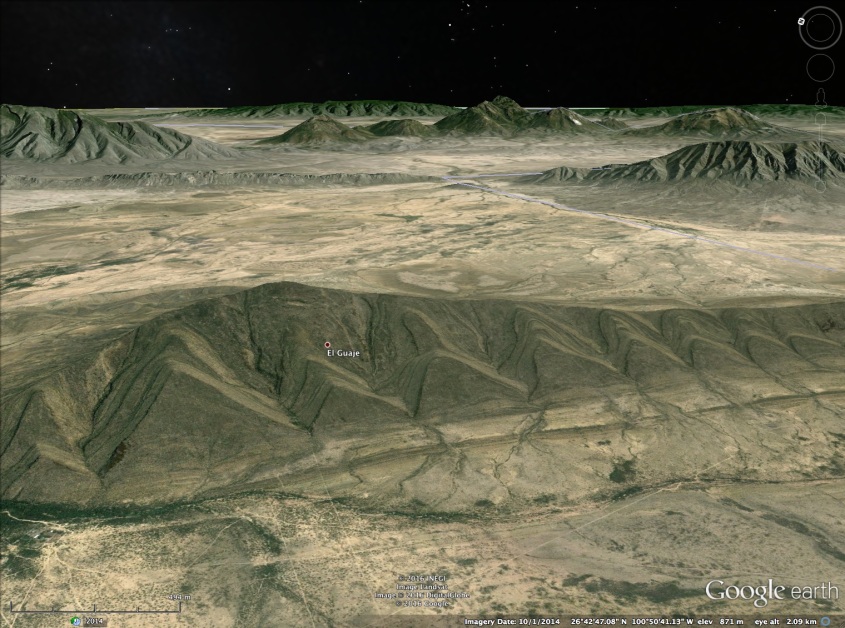

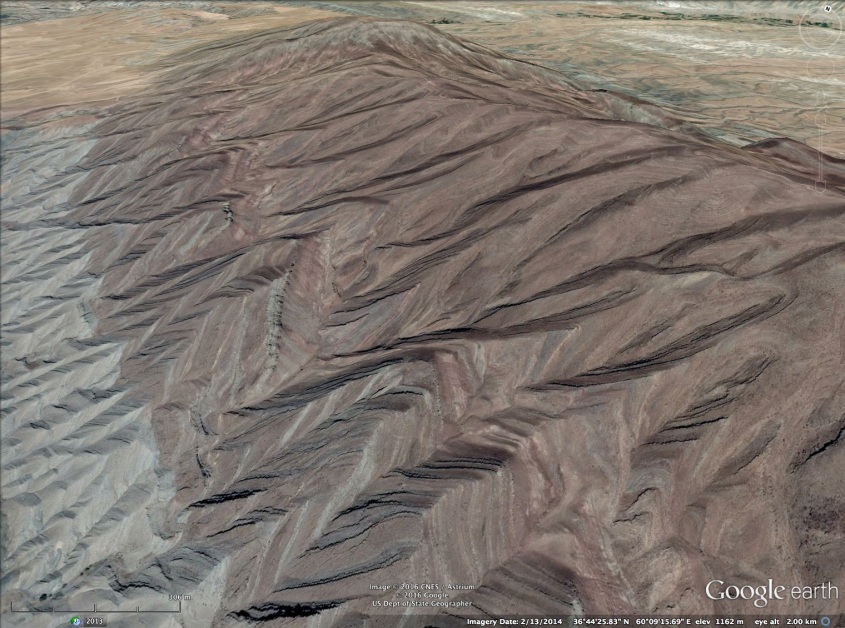
Triangular buttresses are a consequence of reflected shock waves – interference patterns of super-positioning pressure ridges formed by shock waves from the passing bolide. The chevron pattern of the reflected waves can be discerned in the atmosphere trailing the F-18 in the photo below. Shock waves travel in any medium; gas, liquid, or solid, as well as, electromagnetic fields and plasma. Supersonic ionic-winds, heavily clouded with molten rock and dust, form a plasma medium that is molded by the reflected waves. The shock waves fuse these buttresses to the mountain as it’s built by the supersonic in-flowing winds.
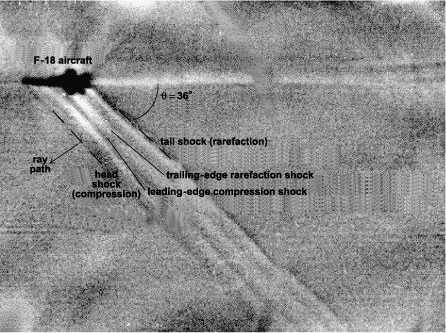
Conventional theory of seismic shock-waves can’t explain…
Earthquakes produce shock waves, too. So, there is a conventional theory of how triangular buttresses can be formed by surface waves from an earthquake. The “Love Wave” and similar models could theoretically cause faulting that produce a triangular buttress. It’s a simplistic model that is inadequate to explain the complexity of features actually seen in nature, however.
For one thing, the type of faulting predicted by surface waves is not evident on many buttress formations. Instead, they have a melted, layered appearance, as if consecutive layers of molten material were molded to the flanks of the mountains by supersonic winds – which is exactly what we theorize happens to form an astrobleme.
Seismic surface waves radiate from an earthquake. This suggests a surface wave would have to roll beneath the mountain to create triangular features. But triangular buttresses are found oriented radially from the center-line of the hill, indicating that is the direction of the shock wave’s source. Buttresses are found curving around the ends of hills and craters, vectored away from the local blast zone, not from a rolling seismic surface wave.
Nor does any conventional theory explain the surrounding areas of ablated ejecta blown away from the astrobleme crater. Ejecta blankets also show the evidence of supersonic winds, displaying conical flow patterns oriented away from the blast zone.
Each of these features; triangular buttresses of layered melt, radially vectored buttresses, and surrounding regions of molten ejecta, are highlighted in the following Google Earth images:








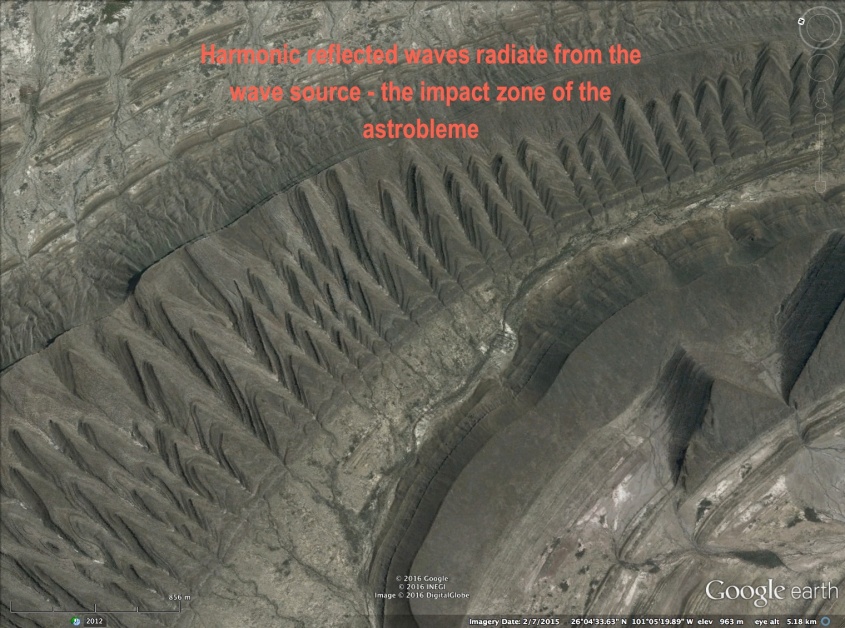
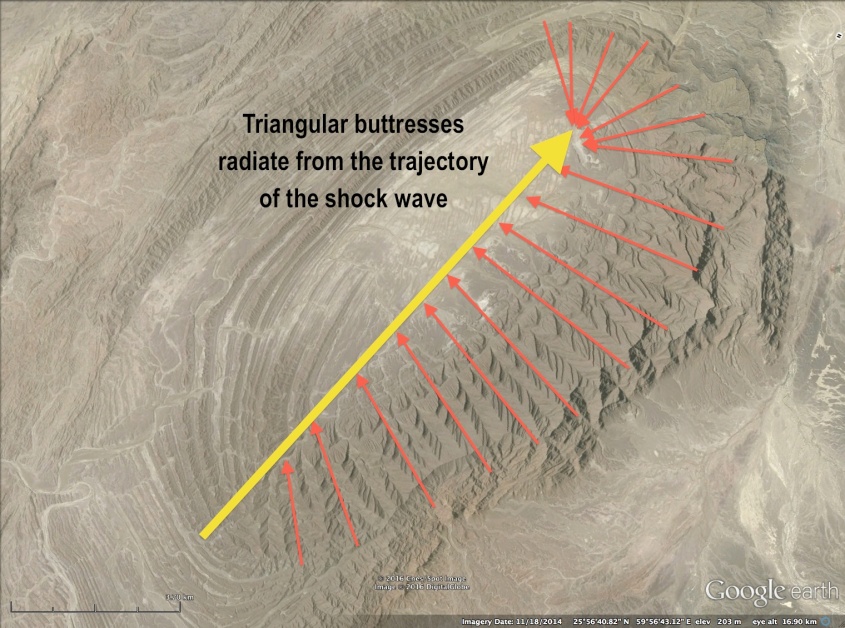




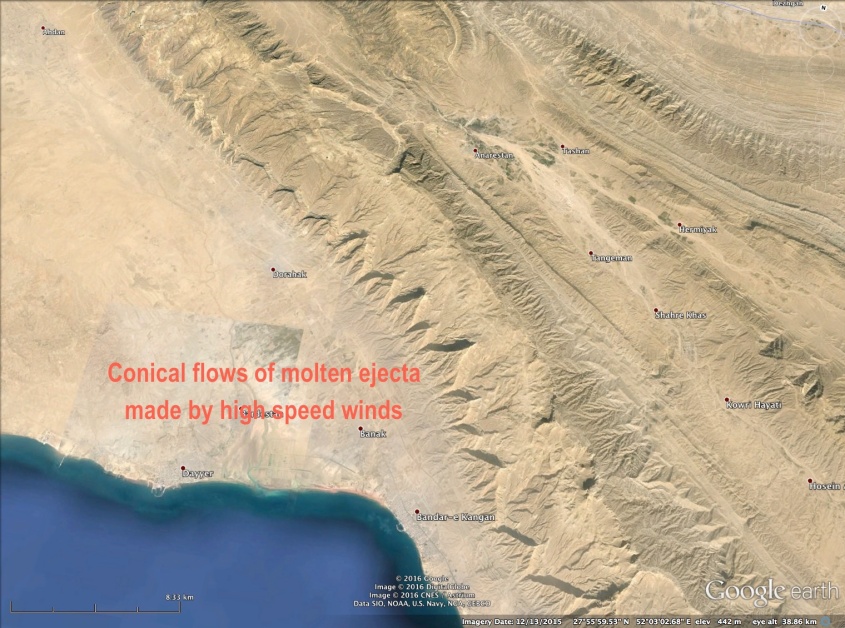
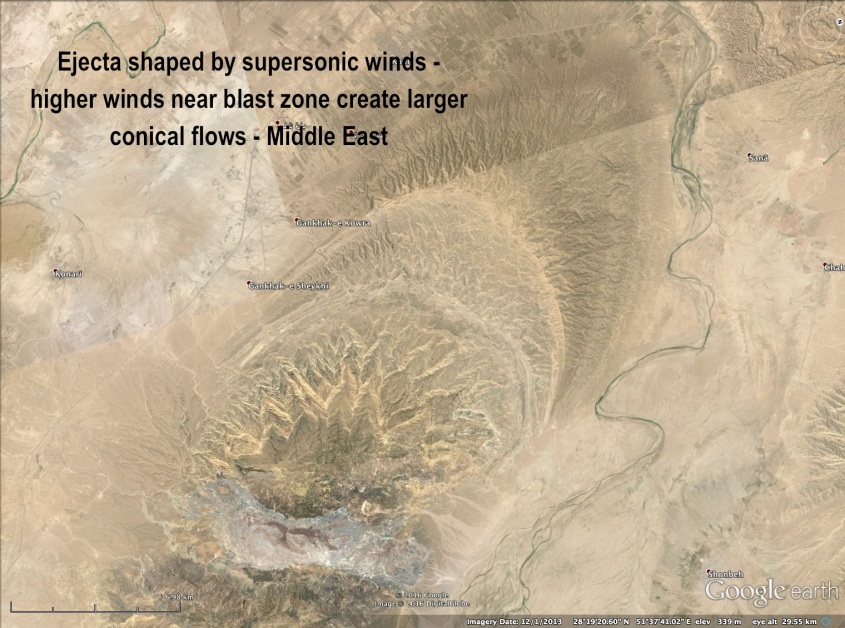
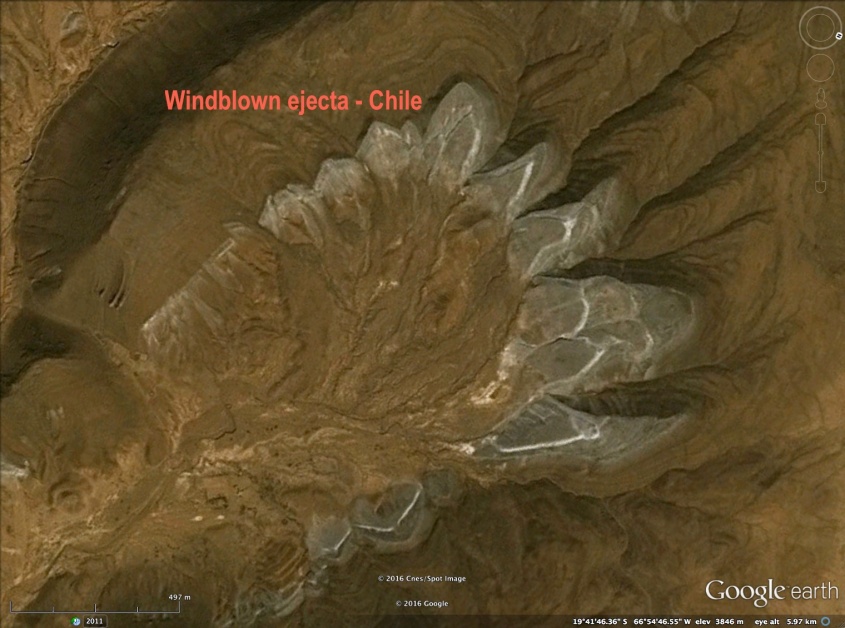

Dr. Boslough’s work demonstrates how a plasma bolide can sear the Earth, leaving an astrobleme with these features. It falls short however, in providing a complete explanation. The idea they are created by meteors from space doesn’t hold-up. Surface conductive fault currents complete the picture of how these astroblemes were formed.
A rain of bolides from comet fragments, or an asteroid, will travel in a specific trajectory – that’s physics – they can’t land at odd angles to each other, or follow sinuous paths across hundreds of miles of terrain. Yet that is what is seen:
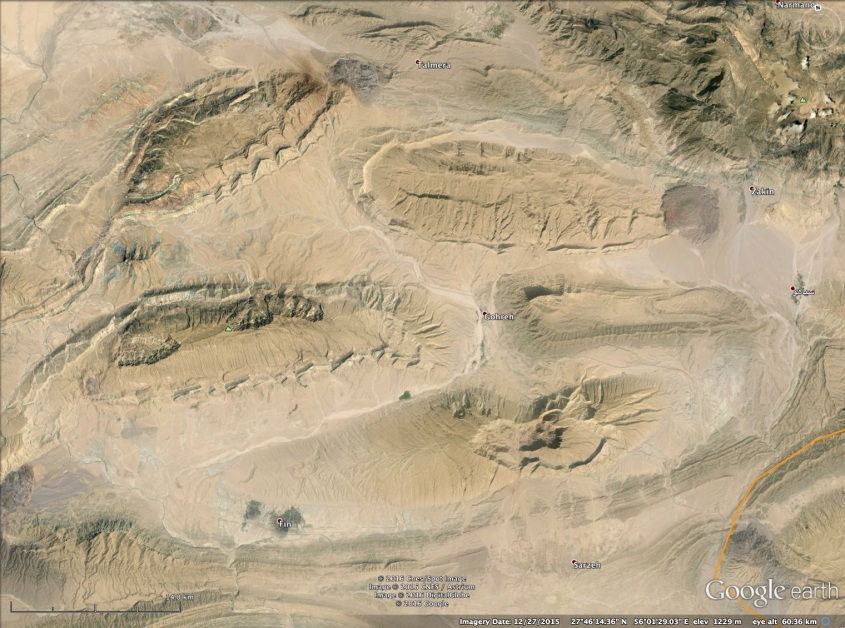
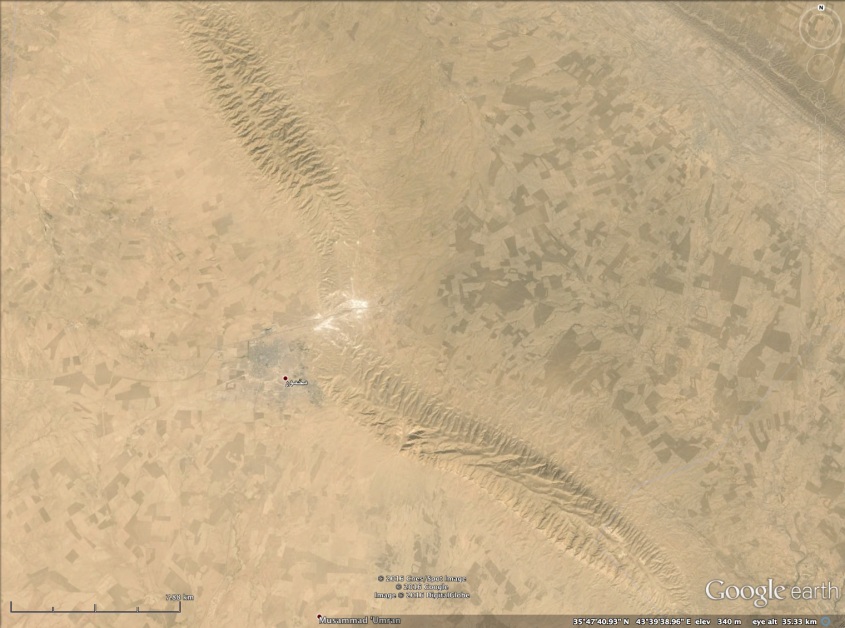


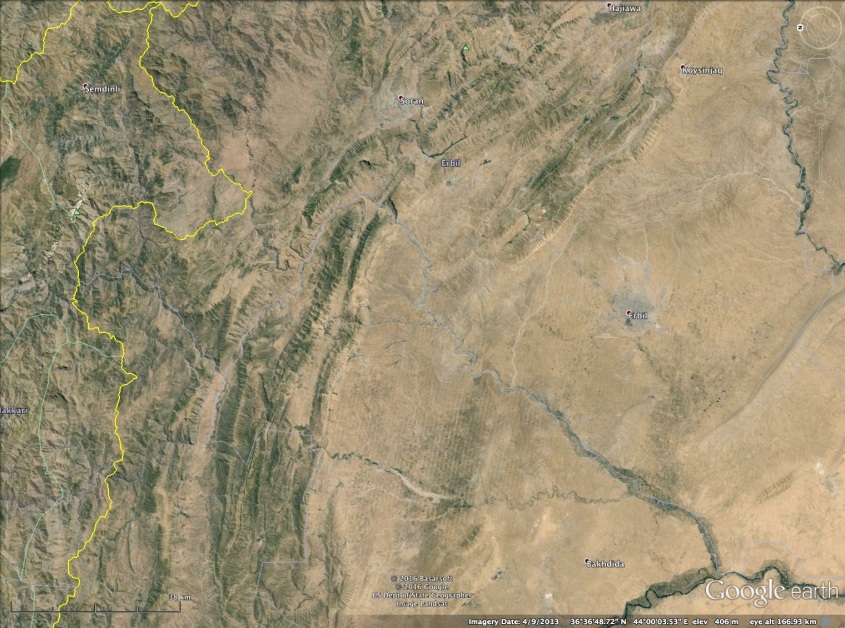
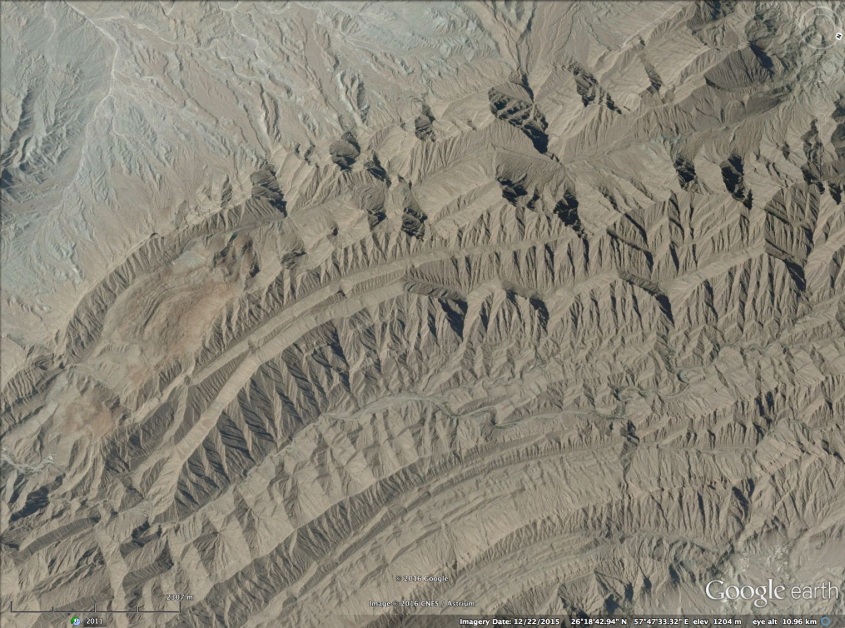


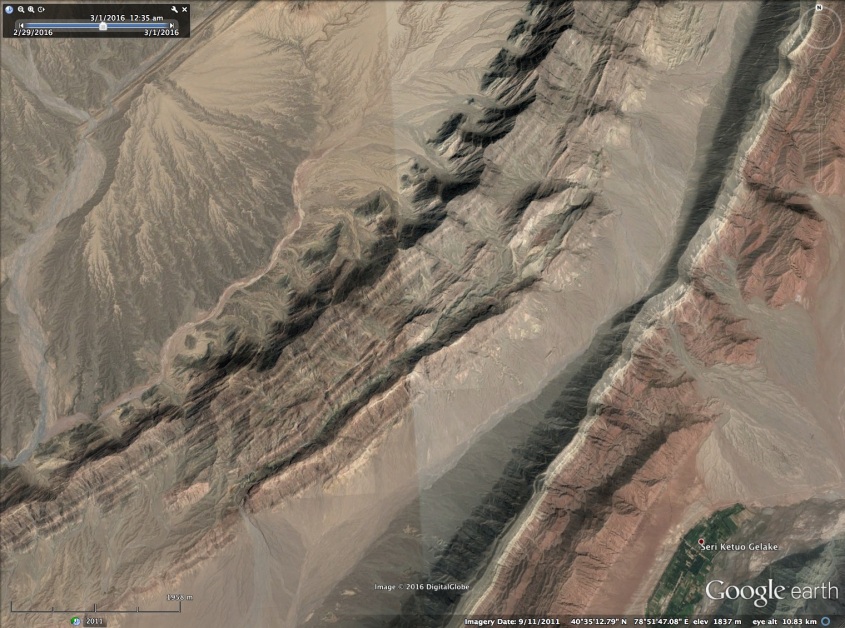


These scars are not produced by fragments of comets, or asteroids. Surface conductive fault currents made these blisters. In some cataclysmic geomagnetic event, Earth’s normal current discharge through the atmosphere – the constant flow of energy through hurricanes, thunderstorms, earthquakes and volcanoes – overloaded, and essentially, short circuited. Sheets of lightning and plasma bolides, arcing through surface conductive paths above the ground, left these blisters.

Unlike a meteor bolide, electrical current doesn’t fly straight, yet it has the extreme energy to create the same temperatures and pressures as a bolide created by an air-burst meteor from space.
As it arcs across the land it is drawn to conductive soils; minerals and moist regions, to skip, branch and gouge divots. Ionized material it carries fires-off as bolides that strike land and leave teardrop astroblemes.
Magnetic fields around the plasma current induce rotation along the horizontal axis of its flight, modifying the speed of the winds. This effect causes some hills to be pushed over, shallower on one side and steeper, with more distinct triangular buttresses on the other. It blows the ejecta blanket asymmetrically, and it may carve a valley longitudinally down the center of the hill. These are all features typically seen and are the result of violent electromagnetic, supersonic blast events.
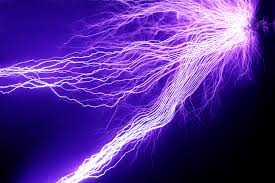 To understand more about how the Earth’s internal currents are induced by the electromagnetic environment of the solar system, see EU 2015 speakers Bruce Leybourne and Ben Davidson explain theories of our electromagnetic environment and the hot spots of current welling inside the Earth. Now imagine those currents amped-up until they short circuit and produce surface conductive faults. The consequences are apparent in the features of astroblemes. But astroblemes only scratch the surface in the story of surface conductive currents. Other startling evidence will be explored in future articles. Your questions, comments and ideas concerning how surface conductive faults can help re-define our understanding of geology are welcome.
To understand more about how the Earth’s internal currents are induced by the electromagnetic environment of the solar system, see EU 2015 speakers Bruce Leybourne and Ben Davidson explain theories of our electromagnetic environment and the hot spots of current welling inside the Earth. Now imagine those currents amped-up until they short circuit and produce surface conductive faults. The consequences are apparent in the features of astroblemes. But astroblemes only scratch the surface in the story of surface conductive currents. Other startling evidence will be explored in future articles. Your questions, comments and ideas concerning how surface conductive faults can help re-define our understanding of geology are welcome.


Thank you. It’s a lot to take in. I watched your three Space Newscasts. I can’t understand all you’re showing us, but what I do get is really eye-opening. I’ve lived in Northern California mountains most of my life and mainstream geological ideas seemed ridiculous to me even as a child. California’s Great Valley, the Hetch-Hetchy, the Feather and San Juaquin canyons, Arroyo, Seco, Yosemite are all too much to fit in the little box of water, wind and so forth.
As I am beginning to understand the matter, we are still very much in a highly dynamic state vis a vis our solar system; which, if I understand, is subject to dramatic change without notice dependent on differences in electric potential and distances between bodies in space. We don’t know when or from where the next big exchange will occur or what effects it will have on the other bodies in the solar system. Finally, it looks like these mighty events have occurred again and again over unknowabl spans of time. Is that correct? Or does it appear to you who study these matters that there have been some knowable number of such episodes? Thanks again. Your clarity is much appreciated by an amateur such as myself.
LikeLike
Crater hunter!!! That site has not been updated since a trip to Minnesota to look at some peat lands. Since seeing your three part video series on Thunderbolts, I have thought that Crater Hunter and yourself should get together and compare notes. I have very much enjoyed your descriptions and images supporting your supposition. I look forward to further posts
Thx
LikeLike
Email me please. ianpshears@yahoo.com.au. Re HIGH_VOLTAGE LAB.
LikeLike
Hello,
Thanks for posting the message in the chat. You can email me or use the contact form
http://www.everythingselectric.com/contact/
info@everythingselectric.com
I saw you commented using disqus but i couldnt find a way to direct message you using disqus. I had also tried seeing if someone at thunderbolts would pass on a message to you but no luck.
For starters I was wondering about the Surface Conductive Faults idea and who came up with it as it seems to use a few people? Is it your idea inspired by others or a team thing etc?
Was there a eureka moment when you spotted something geological or did the ideas make sense then the geology was found?
Thanks, Matthew
LikeLike
Hello,
I am trying to get in touch with the people involved with this very interesting idea.
I would like to write an article about it and explore it further on my site http://www.everythingselectric.com/
Would you be able to give some details as to who came up with it or is it a collection of ideas from different people etc?
It is great that the EU geology is now being investigated and tested further and especially with theories like this to explain what we find.
Regards, Matthew
LikeLike
Hi Matthew,
You are in touch with the people. The ideas are mine, built on the work by Craterhunter and Dr. Boslough I cited in the article. Email me at hallad1257@gmail.com and we can discuss.
Andy
LikeLike